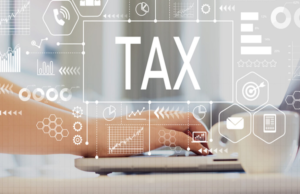
TRACES: Know All About Online Rectification of TDS Return
Have you heard about tax deducted at source? If you have, you have also heard about TRACES – which means TDS Reconciliation Analysis and Correction Enabling System. But, when you haven’t – this post is here to clear all of your doubts. So, let’s get started right at the beginning without the wait.
What is the Meaning of TDS?
TDS is a specified amount that is deducted when a certain payment is made, such as a commission, salary, rent, interest, professional fees, and so on. The person making the payment deducts tax at the source, whilst the person receiving the payment/income is required to pay tax. It reduces tax avoidance because the tax is collected at the time of payment.
What is the Meaning of TRACES?
TDS Reconciliation, Analysis, and Correction Enabling System – TRACES is an Income Tax Department web-based tool that provides an interface to all those involved with TDS administration. It allows you to view challan status, download the Conso File, Justification Report, and Form 16 / 16A, and view annual tax credit statements (Form 26AS).
What Can You Do through TRACES?
Here is everything that you can get done through TDS Traces:
The TDS TRACES portal will enable the taxpayers and TDS deductors to perform a major variety of duties:
- Form 26AS can be seen and downloaded.
- Make a request for TDS or TCS statement revisions.
- Check the challan status.
- Online – you can check the status of numerous tax statements.
- Make a refund request online.
- Download the consolidated file – as well as the Justification Report and Forms 16 and 16 A.
- Corrections to previously submitted returns must be completed online.
- OLTAS Challan rectification online.
The online services are accessible on the TDS TRACES portal and offer a simple way to carry out a variety of tax-related tasks. This has mostly supplanted prior paper – based systems that were far more time-demanding. PAN data and challan corrections could be easily made using this online rectification facility.
How to Make Online Corrections in the TDS or TCS Statement through TRACES?
Step 1: Visit the TRACES website.
Step 2: Under “Defaults,” go to “Request for correction” and input the applicable Quarter, Financial Year, Form Type, and Latest Accepted Token number. The request number will be produced if the correction category is “Online.”
Step 3: The request will be visible under “Track Correction Request” once the request status changes to “Available.” Click on the Available / In Progress state to proceed with the correction and give acceptable KYC details.
Step 4: Choose “Challan Correction” as the type of correction category from the drop-down menu.
Step 5: Make the necessary changes to the selected file.
Step 6: To submit your adjustment, click “Submit for Processing” (Only available to admin user).
Step 7: A 15-digit token number is generated and e-mailed to the registered e-mail address.
How to Check the Status of your Rectification?
- Requested: When a user files a rectification request.
- TDS CPC has started processing the request.
- The request for correction has been approved, and the statement is now accessible for adjustment. The user can begin modifying the statement. The user will be taken to the validation screen after clicking on the URL. When a user clicks on a request with an ‘Available’ status, the request/status statement changes to ‘In Progress.’
- Failed: Due to a technical issue, the request cannot be fulfilled. The user may resubmit the request for the same information.
- The user is currently working on a statement. The user will be taken to the validation screen after clicking on the URL.
- Submitted to Admin User: A rectification statement has been submitted to Admin User by a sub-user.
- Submitted to ITD: An administrator user has sent a correction statement to ITD for processing.
- TDS CPC has completed the processing of the statement (either for Form 26AS or for defaults.)
- TDS CPC has rejected the statement after processing it. The grounds for rejection will be displayed in the ‘Remarks’ column.
The TRACES Justification Report
The TDS TRACES Justification Report has information on defaults / errors discovered by the Income Tax Department while processing the deductor’s statement for a particular quarter of the fiscal year.
This paper contains thorough information about the defaults and errors that the deductor must rectify.
The TDS Challan Correction
What if you make an unintended mistake while making payment, such as selecting the incorrect assessment year, selecting the incorrect major head code, entering the incorrect amount, entering the incorrect PAN / TAN, and so on, and a challan is already generated?
Such inaccuracies result in the deductee receiving no tax credit. The tax agency recognizes that such clerical errors are unavoidable and has set up a system to fix them. Let us look at how to repair problems in TDS challans. Challan rectification can be done both online and offline, the online method being through Traces.
How to Approach the Bank for Challan Correction?
- The taxpayer must send the correction request form to the relevant bank branch.
- The taxpayer needs to include a copy of the original challan counterfoil.
- If a correction is needed for challans in Forms 280, 282, or 283, a copy of the PAN card must be included.
- In the event of non-individual taxpayers, the original authorization with the taxpayer’s seal must be attached to the request form.
- For each challan, a separate request form must be submitted.
Conclusion
It ends up in your hands whether you use the tech and digitization you have to the fullest, and one of them is doing things like error rectifications and corrections online – so what is the wait for? Use TRACES to your benefit.


